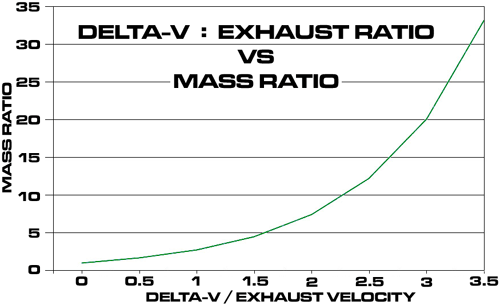Category: Inertia
Awesome visualization of Inertia
Great and unintuitive physics experiment by Mythbusters
Nice gif showing off inertial forces

There are actually three fake forces in a rotating frame
A fictitious force, pseudoforce, or inertial force is an apparant force that arises because of describing motion in a ‘non-inertial frame of reference’. ‘Non-inertial’ means that the frame doesn’t have constant velocity. A plane flying at constant speed is roughly ‘inertial’, an accelerating rollercoaster is not ‘inertial’.
The inertial forces make a rollercoaster fun and sickening. They toss you around. Inertial forces make your clothes dry in a centrifuge and kill you when you are in a car accident.
List of fake forces:
In a linear constant motion there are no fictitiuous forces. This frame is inertial.
In a linear accelerating frame you will feel one ‘fake force’
- Linear fictitious force
This is the force that pushes you back into your seat when you are accelerating in a car. In the image above you can see it at work.
In a rotating frame, that isn’t accelerating you will feel two forces:
- Centrifugal force
- Coriolis force
In an accelerating rotating frame you will find another force:
- Centrifugal force
- Coriolis force
- Euler force
Centrifugal force
So the centrifugal force is that which makes the water go out of your cloths in a centrifuge. It is that what you feel when you take a quick turn on the road in a car.
Coriolis force
The Coriolis force is harder to notice. It becomes noticeable on a grander scale. For example, the Coriolis force is the reason why artillery will always deflect from their target if pointed straight at that target. The Coriolis force is why you can’t drop something in a mineshaft and make it reach the ground. The Coriolis force is the reason why the weatherpatterns turns clockwise and counterclockwise north and south of the equator.
Euler force
The Euler force is a force that I didn’t know about. Basically, it is the force you feel when you getting pushed into your seat in an accelerating merry-go-round. It is basically analogous to the linear fake force that you can see in the image above. I don’t know of any interesting effects it produces.

- The centrifugal force is parallel to the radius
- The coriolis force is perpendicular to the velocity
- The euler force is perpendicular to the radius.

Rocket fuel problem as an analogy to E=mc2
Analogy with rocket fuel
The dreaded problem with rockets is that if you want to go faster you need more fuel. But by taking more fuel on to the rocket, you are increasing your mass. Thus you need more fuel to take with you to accelerate that increased mass. You can see that taking more and more fuel reduces the speed gained by that fuel. For example the Soyuz-rocket was 91% fuel! So you used most fuel to accelerate other fuel.

The extra fuel you pack to overcome the inertia, also adds inertia.
The fuel is just like Energy for moving bodies
The original paper introducing E=mc² actually also is named: ‘Does the Inertia of a moving body depend on its Energy content?’ Newton would have answered ‘no’. A airplane moving at 500 km/h has just as much inertia (it’s mass) than an airplane at rest. However, this is not true.
The extra kinetic energy of a moving body has inertia itself. It has ‘weight’. Just like the extra fuel you pack has ‘weight’. This is why there is an upperbound to the max velocity you can achieve. Check the graphs below for better understanding and compare it to the rocket fuel graph.
Does spacetime have inertia?
Warning: crackpot-theory inbound:
So I wonder, does a piece of space-time have inertia? That question probably doesn’t even make sense, because a piece of space-time can’t really have a velocity. Because it ‘contains’ time. Somehow it can oscillate.
Or does space-time behave like a fluid? Having viscosity terms. Isn’t the universe just a suspension of stars in photon gas and space-time?
I always wondered if there are connections between the navier-stokes equations einstein-field equations, especially since the latter appear to be thermodynamic.
How would space-time look inside a rotating spherical shell?
Would inertial waves arise?
Well, space-time has energy density and thus has inertia via the ‘Energy-mass equivalence’
https://en.wikipedia.org/wiki/Inertial_wave

Inertial forces do not discriminate on weight.

What happens when the bus suddenly stops to the passengers?
Why does that happen?
Do different masses have different effects?
Wat is the relation with gravity?
Imagine standing in a bus next to an overweight guy. The bus is going pretty fast, 60 mph and suddenly has to brake for an old lady crossing the street.
The sudden breakages throws you and the fatty forward! Now, here is the essential question: Who flies further? The fat guy or you?
First of all, remember: a loaded shopping cart takes more force to accelerate than an empty shopping cart.
So the fat guy needs more force to accelerate than you need.
Well, you both accelerate at exactly the same rate! Somehow the fatter guy also has a bigger force on it? How is this possible?
This is because there is no actual force! You are not thrown forward, the bus is ‘thrown backwards’! Since you are going 60 mph, you continue going 60 mph regardless of the bus’ speed. This means there is no actual force on you, you just continue your path.
This ‘fake force’ or ‘inertial force’ (because the cause is the ‘inertia’ of your mass) is easy to distinguish in this ‘braking bus’-experiment. However, there are other experiments where the inertial forces can be way more subtle. People assume that there is an actual force, even though there is an opposite force on the environment.


